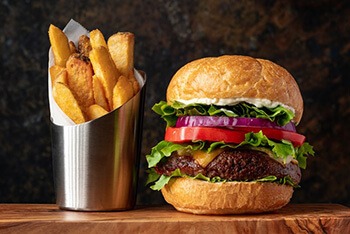If you’re a woman and you’ve been experiencing pain or discomfort that you can’t put your finger on, it might be that you have fibroids. Fibroids are actually incredibly common – it’s thought that up to 80 percent of women have them by the age of 50. However, most women don’t have any symptoms, and may never know that they have fibroids.
So, what exactly are fibroids? They’re a type of abnormal growth that develops in or on the uterus. These tumours can sometimes become quite large, which is when you’re more likely to experience pain around your abdomen and heavy periods.
Often, though, fibroids cause no signs or symptoms at all. It’s not yet understood why people get fibroids.
There are several different types of fibroids you can get. Intramural fibroids are the most common type, and they form inside the muscular wall of the uterus.
Another type of fibroid, subserosal fibroids, form on the outside of your uterus. If these develop a stem, this is known as pedunculated fibroids. Finally, submucosal fibroids develop in the middle muscle layer of your uterus. These are the least common type of fibroids.
If you experience symptoms with fibroids, they will most likely include:
- Heavy bleeding between or during your periods that includes blood clots
- Pain in your pelvis or lower back
- Increased cramping during your period
- Increased urination
- Pain during sex
- Periods that last longer than usual
- A feeling of pressure or fullness in your lower abdomen
- Swelling or enlargement of the abdomen
Home Remedies for Fibroids
You may receive medical treatment, such as surgery, for fibroids if you’re in a lot of pain or discomfort. Alternatively, there are things you can do at home that will help to shrink your fibroids and reduce your symptoms. Stay tuned for our full list of home remedies for fibroids to try out today.
1. Do nothing
It might sound counterproductive, but in the case of fibroids, sometimes doing nothing is just as effective as doing, well, something. Fibroids tend to shrink around menopause, and while this isn’t always the case, if your symptoms aren’t life threatening, waiting may be a reasonable option.
What about if you’re not yet approaching menopause? You might be thinking “If I was interested in doing nothing, I wouldn’t be watching this video the first place!” That’s very true, but it’s still worth keeping in mind that plenty of fibroids do actually shrink on their own.
That said, waiting for fibroids to shrink isn’t always the best option. In fact, for most women, waiting it out can actually make fibroids worse. If you’re nowhere near menopause, or you would rather take a more active approach, you’re best skipping this tip and following the rest of the options in this video.
2. Have a baby

Obviously, having a baby is nothing to rush into, and there are many factors to consider before you take the leap. For starters, do you have enough money to financially support yourself and your new child?
How would you rate your parenting abilities? Is your relationship with your partner stable and loving? You should never want to have a baby simply to shrink your fibroids – but if pregnancy was on the cards anyway, you’re going to like what we’re about to tell you.
Unfortunately, when you’re actually pregnant, chances are high that your fibroids will temporarily grow during this time. But, beyond that, there’s plenty of evidence to suggest that having a baby can improve fibroids. Some fibroids shrink or even disappear postpartum, so if you were already thinking about having a child, now you have even more reason to go ahead and have one.
3. Avoid Foods That Make Fibroids Worse
There are a whole host of food groups that can make fibroids worse. Stick with us and we’ll go through the most important ones.

High-Fat, Processed Meats are some of the worst food choices for women when it comes to fibroids. Foods high in unhealthy fats, like hamburgers or sausages, can increase inflammation levels. Processed foods also contain chemical additives and other ingredients that lead to increased inflammation.
Make sure to reduce the amount of meat you eat where you can. An easy way to do this is to replace the unhealthier stuff with plant-based protein in your diet. When you do eat beef, always try to go for grass-fed.
Conventional Dairy, as in, the non-organic type, can be high in steroids, hormones and other chemicals that can end up altering your hormones levels when you consume it in high amounts. This encourages the development and growth of fibroids.
Refined Sugar is a bad one anyway, but in the case of fibroids, it can worsen symptoms by promoting inflammation and causing weight gain. Refined sugar is also thought to increase pain and reduce immune function. When you gain weight, this can cause a hormonal imbalance, which encourages the development of fibroids.
Refined Carbohydrates are something we don’t consider as much as sugars, but they can be just as bad for women dealing with fibroids. If you want to manage your hormones, you need to focus on eliminating refined carbs — like products made with white, bleached flour. These cause insulin levels to spike and hormones to become off-whack.

Alcohol isn’t the best for us – we all know this anyway. But when it comes to fibroids, over-consuming alcohol leads to increased inflammation throughout the body and reduces immune function; can promote weight gain; and encourages hormonal imbalances. When you reduce or eliminate alcohol, you can get your hormones back on track and help shrink existing fibroids.

4. Eat Foods that Help Relieve Fibroids
In the same way that certain foods trigger the production of fibroids, certain foods can help soothe your symptoms. These include:
Organic foods that are made and grown without chemical pesticides. Pesticides have been found to aggravate oestrogen levels and other hormones. As hormonal balance is key to natural fibroid treatment, you want to reduce your pesticide intake as much as possible.
Green leafy veggies are known to have anti-inflammatory effects, and can reduce the growth of fibroids in the uterus. They’re also rich in vitamin K, which helps control menstrual bleeding.

Cruciferous vegetables like broccoli, cabbage and tomato support detoxification of your liver and can help balance oestrogen levels. The high antioxidant and fibre content of these veggies can help reduce the occurrence of uterine fibroids.
Beta carotene-rich foods are turned into vitamin A when we digest them. This promotes the growth and repair of healthy tissues, which can be very helpful for treating fibroids. Some foods that are high in beta-carotene include carrots, sweet potatoes, kale and spinach.
High-iron foods can prevent anaemia, which is common in women with fibroids who experience heavy bleeding with their periods. Good sources of iron include the likes of grass-fed beef and legumes.
Flaxseeds can help balance oestrogen levels in the body, which works to shrink fibroids. You should aim for at least 2 tablespoons of flaxseeds per day if you already have fibroids. You can sprinkle them onto your oatmeal, add them to your smoothies or just eat the seeds by themselves.

5. Try Essential Oils

Thyme, clary sage and frankincense are the best essential oils for natural fibroid treatment. All of these have the ability to help balance hormones naturally. Clary sage oil has an additional benefit – it can also lower cortisol levels and have antidepressant effects. This should help your hormones to stay regulated.
To use these essential oils, simply rub 2 drops of each oil over your lower abdomen two times a day. Remember to combine the oils with a carrier oil like coconut oil to prevent issues relating to skin sensitivity. Another good remedy is to put a couple of drops of frankincense oil on the roof of your mouth two times a day.
6. Sip on Herbal Teas

If you’re looking for a soothing remedy for fibroids, stock up on your favourite herbal teas. Herbal teas are thought to help ease symptoms of fibroids by decreasing inflammation and rebalancing certain hormones. The best teas are those that are made with chasteberry, milk thistle, yellow dock, dandelion root, nettle and red raspberry. All of these have a broad range of benefits for both your uterus and reproductive system.
Diabetic patients in particular should be careful when using biotin as a treatment for their illness.
7. Try Castor Oil Packs
When you apply a castor oil pack to your lower stomach area, you increase circulation in your lymphatic and circulatory systems, and also increase the number of disease-fighting white blood cells in your body. If these toxins are allowed to build up, experts think that they can lead to increased risk of fibroid development.
Castor oil contains an anti-inflammatory compound called ricinoleic acid. There hasn’t been any scientific research to date on the benefits of this acid for fibroids, but it makes sense that castor oil packs could be helpful.
8. Avoid Exposure to Environmental Toxins

When you have fibroids, exposure to certain environmental toxins can make your symptoms worse. Be sure to stay away from pesticides, herbicides, synthetic fertilizers, bleach, food preservatives, harmful cleaners and food dyes if you want to keep your health in check.
You’ll also want to opt for natural, unbleached feminine care products as well as organic body care products and makeup.
9. Exercise
Getting regular exercise can actually help to prevent fibroids before they even appear. One study found that the more a woman exercises, the less likely she is to get uterine fibroids in the first place.
Exercise has whole host of anti-inflammatory effects, and can help control blood pressure and improve insulin sensitivity. Of course, it’s also beneficial for weight management, and may contribute to hormonal balance. A winning recipe for fibroid shrinking!

Conclusion
Fibroids are unavoidable, and it’s impossible to ever fully eliminate them without surgery. But for most people, fibroids aren’t enough of an issue to require something as intense as an operation.
If you’re simply looking for ways to prevent your fibroids from growing and reduce your symptoms, the tips in this video are for you. If you don’t already follow them, try implementing three or four at a time and seeing how you can benefit.
With that said, if your fibroids are seriously impacting your quality of life, don’t hesitate to reach out to a doctor for medical support.

